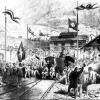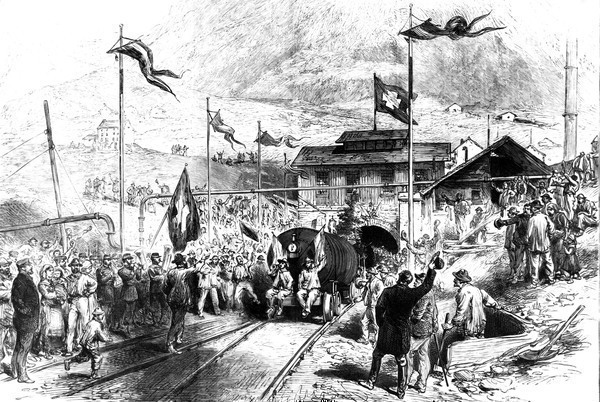Competition and compromise for 'the heart of Europe': the Berne Convention of 1886
In 1886, representatives from all over Europe met in the Swiss city of Berne to develop a Convention on the International Traffic of Goods by Rail (also known, not surprisingly, as the Berne Convention).
At that time, Europe had three major railway systems, each of which was based on different standards. These different standards, which included differing keys for the wagons, made cross-border railway traffic difficult. The convention resolved most of these differences in national law and regulation, creating the basis for a single European railway system.
Until the Berne Convention, the three systems involved fifty-eight thousand kilometers of rail in the area of Germany, Austria, Hungary, Italy, and Switzerland, nine thousand kilometers of rail of the Southern French and Calabria–Sicily lines, and twenty-eight thousand kilometers of rail lines in France and the Mediterranean area, which were mostly incompatible. During the 1860s, railway traffic had exploded in popularity and led to intense competition over new alpine and cross-border connections.
The Germans and the Swiss agreed to build the Gotthard tunnel to link Germany to Italy across the Alps. The French feared this would bypass its main trade centers. French entrepreneurs proposed another tunnel in Switzerland via the Simplon pass to connect French cities such as Lyon to Italy. Switzerland, which had started developing its railways late, found itself at the heart of the European transit system. In order to reach a workable solution, the Swiss proposed a convention that would not be legally binding unless implemented in the national laws of all of its signatories.
Although some signatories did not adhere to the agreement, the Berne Convention signified huge progress in building an integrated European railway system.
 Previous Story
Next Story
Previous Story
Next Story
How to cite this page
Suzanne Lommers, 'Competition and compromise for 'the heart of Europe': the Berne Convention of 1886', Inventing Europe, http://www.inventingeurope.eu/story/competition-and-compromise-for-the-heart-of-europe-the-berne-convention-of-1886
Sources
- Kaiser, Wolfram, Johan Schot, and Dagmara Jajesniak-Quast. Making Rules for Europe:
Experts, International Organizations, Cartels. Basingstoke: Palgrave, forthcoming. - Ribeill, Georges. “Aux Origines De L’utopie Du Réseau Ferroviaire Européen Intégré.” Revue Européenne D’histoire Sociale 21 (2007): 44–59.
- Ribeill, Georges. “L’Unité Technique Des Chemins De Fer En Marche (1886-1908).” Chemins De Fer 496 (2006): 32–39.
- Schueler, Judith. Materialising Identity: The Co-Construction of the Gotthard Railway and Swiss National Identity. Amsterdam: Aksant, 2008.




















